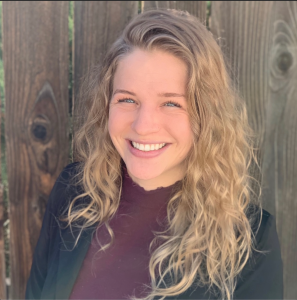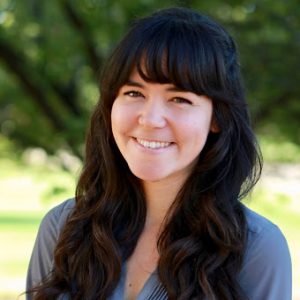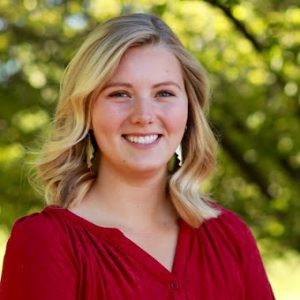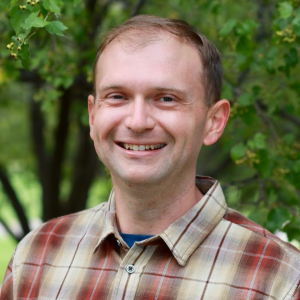This is the first blog post in a series on diversity, equity and inclusion in Colorado agricultural water planning. Find the second post here.
Effective agricultural water planning is critical for a sustainable and resilient future in Colorado. Not only does the agricultural sector account for 86.7% of the state’s consumed water, but agriculture is also the crucial economic and cultural foundation for many communities. The 2015 Colorado Water Plan (CWP), a statewide roadmap for water management, is currently undergoing a multi-year update that includes new information, critical action items, and revised water planning schemes for all sectors. This update will be published in 2022. In order to foster lasting resilience, the CWP update must be more inclusive of all Coloradoans and provide comprehensive planning for historically underserved communities across the state.
True sustainability can not be divorced from empowering all communities. Studies show that systems with many sources of knowledge are generally more resilient. Just as farmers often plant several different crops to prepare for potential vulnerabilities, water planning must strive to be as diverse as possible to create a water resilient future.
Who has been excluded from agricultural water planning?
Colorado has an exciting opportunity to be more inclusive in water planning and subsequently create a truly sustainable CWP. But first, underserved groups must be identified throughout all sectors. This will necessitate nuanced outreach and calls to action. Three groups who have been historically excluded from Colorado water planning in agriculture are:
- People who operate under acequia management systems. For communities in Colorado and northern New Mexico, an acequia is a physical system, an irrigation ditch, but it is also a deeply embedded philosophy of community and governance. These producers are primarily Hispanic or Latinx and reside in the San Luis Valley within the Rio Grande River Basin or in the Arkansas River Basin. The term “acequia” is mentioned only once in the entire 2015 CWP — in a footnote of a farmer profile.
- Tribal water users. Two federally recognized tribes have designated land reservations within the borders of Colorado: the Southern Ute Indian Tribe (SUIT) and the Ute Mountain Ute Tribe (UMUT). While it must be acknowledged that 48 contemporary tribal nations are historically tied to the lands that make up Colorado, the Ute tribes are holders of federal reserved water rights in the state. Both the SUIT and UMUT tribal reservations are located within the Southwest Basin (e.g. San Juan/Dolores), though the UMUT reservation also includes land in New Mexico and Utah. While the tribes have become more frequent partners in broader interstate negotiations, inclusion at the intrastate level is still limited to the Southwest Basin Roundtable. Given the Ute tribes’ status as the state’s original water users and the unique nature of their federally reserved rights, more efforts should be made to explicitly include tribal representatives in deliberative processes.
- Urban agricultural producers. Urban agriculture in Colorado may include a variety of production methods and water uses, such as community gardens, hydroponic growing facilities, small-scale market farms, and more. It is important to note that there is not necessarily the same rich history or record of exclusion for urban agriculture as the above two groups. Rather, planning for water in urban agriculture could present an exciting opportunity to foster resilience in the food system and land use planning for the future of Colorado. Before defining demographics and practices within urban agriculture, a standard definition of urban agriculture in Colorado must be implemented.
Tribes are acknowledged in the Southwest Basin Implementation Plan, and acequias are acknowledged in the Rio Grande Basin Implementation Plan. Urban agriculture is not mentioned in the 2015 CWP or in any of the Basin Implementation Plans (BIPs). The BIPs could serve as an opportunity to elevate underserved voices, given their regional focus, and create a space for them at the state level. An equitable and just water planning process at all levels, from local to basin to state, is critical for Colorado’s present and future water needs.
Paving the way toward more inclusivity in Colorado water planning
The Department of Natural Resources has recently announced the formation of a water equity committee, which is set to include representatives from each river basin and each tribal nation. Within this engagement process, Colorado water planners must make the effort to explicitly solicit input and feedback from underserved individuals and groups in agriculture and all other water sectors. Outreach efforts must be nuanced for each community, each conversation, and each stage in inclusive planning. Overall, CWCB should focus on elevating voices of change makers within historically underserved communities and solicit consistent feedback for a more inclusive, equitable, and holistic Colorado Water Plan.
This strategy should aim to advance diverse representation in natural resource planning and provide opportunities for more equitable funding. Explicit inclusion via community outreach may also encourage diversity in water planning schemes, which can in turn create a more sustainable future. The equity committee and the CWCB should reach out to representatives of underserved communities and facilitate dynamic and interactive working sessions where stakeholders can discuss water challenges and opportunities with the CWCB.
In partnership with CWCB and the University of Colorado – Boulder, we conducted an initial working session with a goal of establishing a more inclusive dialogue for producers. This work session, which focused on water issues among urban agriculture producers, will be discussed in a later blog post.
Ideally, such facilitated dialogues will lead to additional working sessions, inclusion in water planning procedures at the state level, participation in Basin Roundtables, submission of public comments, and general advocacy pointed toward agricultural water planning. This approach may foster a more diverse, equitable, and inclusive 2022 Colorado Water Plan, and a better water planning process into the future.
 Willow Cozzens currently serves as the Water and Equity Project Coordinator for the National Young Farmers Coalition and Frontline Farming and as the Equity and Food Policy Analyst for Jefferson County Department of Public Health. She holds a Master’s degree in Sustainable Food Systems from the University of Colorado – Boulder, where her coursework and practical application projects were focused in environmental policy, food and agriculture law, natural resources science, and responsive activism. Willow is particularly passionate about the cultural and economic impacts of natural resources management and food justice.
Willow Cozzens currently serves as the Water and Equity Project Coordinator for the National Young Farmers Coalition and Frontline Farming and as the Equity and Food Policy Analyst for Jefferson County Department of Public Health. She holds a Master’s degree in Sustainable Food Systems from the University of Colorado – Boulder, where her coursework and practical application projects were focused in environmental policy, food and agriculture law, natural resources science, and responsive activism. Willow is particularly passionate about the cultural and economic impacts of natural resources management and food justice.
 Samantha Grant just achieved her Master’s degree in Sustainability Planning and Management from the University of Colorado – Boulder. Her graduate work primarily focused on environmental policy, water resource management, and climate justice. Her career interests are largely centered around community-based climate action planning as a means to create inclusive and impactful change for all.
Samantha Grant just achieved her Master’s degree in Sustainability Planning and Management from the University of Colorado – Boulder. Her graduate work primarily focused on environmental policy, water resource management, and climate justice. Her career interests are largely centered around community-based climate action planning as a means to create inclusive and impactful change for all.
 Amelia Nill is originally from Kansas City, Missouri and is a recent graduate of the Master’s of the Environment program at the University of Colorado – Boulder. There, she specialized in Sustainability Planning and Management as well as Water Engineering and Management. She is currently volunteering for the American Water Works Association on their Sustainability Committee. She is interested in pursuing a career in natural resource (specifically water) planning, sustainability and environmental justice.
Amelia Nill is originally from Kansas City, Missouri and is a recent graduate of the Master’s of the Environment program at the University of Colorado – Boulder. There, she specialized in Sustainability Planning and Management as well as Water Engineering and Management. She is currently volunteering for the American Water Works Association on their Sustainability Committee. She is interested in pursuing a career in natural resource (specifically water) planning, sustainability and environmental justice.
 Andrew Primo recently graduated from the University of Colorado – Boulder with his Master’s in Environmental and Natural Resource Policy. His graduate work focused on Western water planning and policy, public lands decision-making, and science-policy communication. His career interests are focused on environmental and science education and outreach, bridging the science-policy gap, and environmental storytelling.
Andrew Primo recently graduated from the University of Colorado – Boulder with his Master’s in Environmental and Natural Resource Policy. His graduate work focused on Western water planning and policy, public lands decision-making, and science-policy communication. His career interests are focused on environmental and science education and outreach, bridging the science-policy gap, and environmental storytelling.


 Print
Print